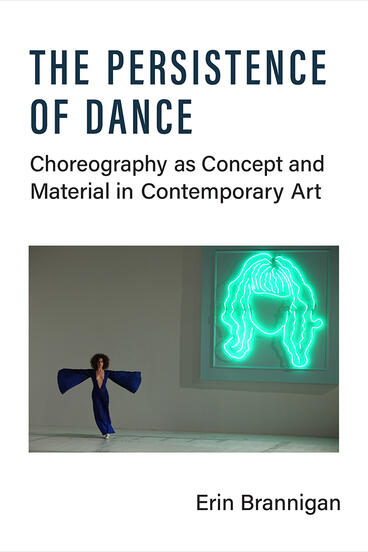The Persistence of Dance
Choreography as Concept and Material in Contemporary Art
Exploring museum-based choreography as a contemporary art medium
Description
There is a category of choreographic practice with a lineage stretching back to mid-20th century North America that has re-emerged since the early 1990s: dance as a contemporary art medium. Such work belongs as much to the gallery as does video art or sculpture and is distinct from both performance art and its history as well as from theater-based dance.
The Persistence of Dance: Choreography as Concept and Material in Contemporary Art clarifies the continuities and differences between the second-wave dance avant-garde in the 1950s‒1970s and the third-wave starting in the 1990s. Through close readings of key artists such as Maria Hassabi, Sarah Michelson, Boris Charmatz, Meg Stuart, Philipp Gehmacher, Adam Linder, Agatha Gothe-Snape, Shelley Lasica and Latai Taumoepeau, The Persistence of Dance traces the relationship between the third-wave and gallery-based work. Looking at these artists highlights how the discussions and practices associated with “conceptual dance” resonate with the categories of conceptual and post-conceptual art as well as with the critical work on the function of visual art categories. Brannigan concludes that within the current post-disciplinary context, there is a persistence of dance and that a model of post-dance exists that encompasses dance as a contemporary art medium.
Erin Brannigan is Associate Professor of Theatre and Performance Studies at the University of New South Wales. Her book Choreography, Visual Art and Experimental Composition 1950s-1970s received the Selma-Jeanne Cohen Dance Prize.
Reviews
“An expansive and brilliant assessment of how choreography operates as material in visual cultures, placing dance at the center. Brannigan has crafted a wondrous overview of the terms of dance as a contemporary art medium, moving with the dancers who enliven its operations. A necessary offering for all thinking about how dancing gathers artistic practice in relationship to philosophy, art theory, and urgent questions of labor and property as aspects of performance.”
- Thomas F. DeFrantz, Northwestern University
“An invaluable resource for dance artists and scholars, opening new perspectives on dance in the gallery, and asking how the art form might find balance between its own needs and the wish for interdisciplinary validation.”
- Jonathan Burrows, choreographer
“Erin Brannigan’s The Persistence of Dance brings her razor-sharp attention to contemporary avant-garde dance. This field-defining book illuminates what has been called the ‘choreographic turn’ in contemporary art, highlighting the persistent contribution of dance to contemporary practice.”
- Susan Best, Griffith University
“In The Persistence of Dance, Erin Brannigan draws on the compositional approaches of choreographers creating dances in non-theatrical spaces to show how dance fills in a fundamental gap in contemporary arts discourse. Her argument not only marks out a new emancipation for dance practice, but also demonstrates how dance effectively contributes to fundamental changes that major arts institutions are undergoing. This book is essential reading for anyone interested in how the performative turn in the visual arts is more than just a passing phase.”
- Scott deLahunta, Coventry University
“Argues that although dance is uniquely placed to champion contemporary, transdisciplinary artistic practices, dance literacy has remained a blind spot with the visual arts field. The Persistence of Dance opens up a new field of study: dance as a contemporary art medium, as it offers a fresh and radically dance-centered perspective on dance.”
- Victoria Wynne-Jones, University of Auckland
“As the first book-length study on this subject, this book will be a great resource. Dance practitioners will find it especially helpful in navigating the worlds of the visual and performing arts in search for disciplinary orientation. . . . One of its best features are the meticulous case studies and precise descriptions of body movements, reflecting a decidedly dance-centered perspective.”
- Lisa Beisswanger, Technical University of Darmstadt
“A precious tool for understanding the presence of dance and choreography in galleries and museums that began at the turn of the 20th century and continues to this day. Erin Brannigan offers a fascinating and original historical framing of this vast field, privileging the artists' intentions and perspectives.”
- Susanne Franco, Ca’ Foscari University of Venice

